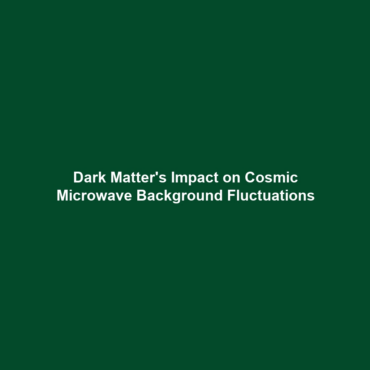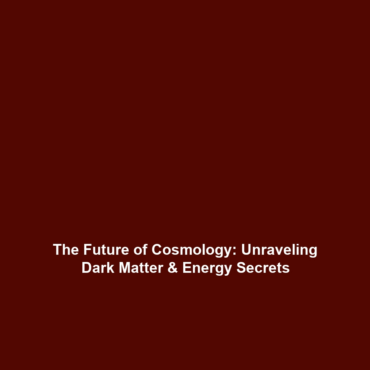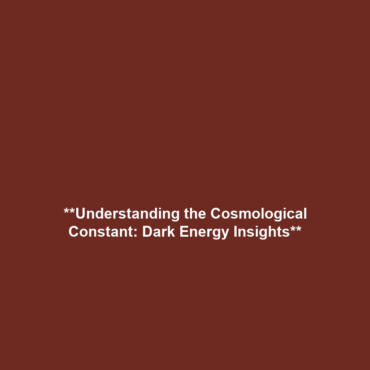The Role of Dark Matter in Galaxy Formation and Structure
Introduction: Dark matter plays a crucial role in the formation and structure of galaxies, providing the unseen mass that shapes our universe. Understanding its significance is paramount within the broader context of dark matter and dark energy, two of the most enigmatic components of the cosmos. This article explores how dark matter influences galaxy formation, highlights key concepts, applications, current challenges, and future research directions, establishing a comprehensive overview of its role in the intricate web of the universe.
Key Concepts
To grasp the role of dark matter in galaxy formation and structure, we must first understand some fundamental concepts:
- Dark Matter: A form of matter that does not emit, absorb, or reflect light, making it invisible and detectable only through its gravitational effects.
- Galaxy Formation: The process through which galaxies develop over cosmic time, influenced significantly by gravitational interactions involving dark matter.
- Cosmic Web: The large-scale structure of the universe, characterized by filaments of dark matter that dictate the distribution of galaxies.
Dark matter is essential for explaining the formation and stability of galaxies, aiding in their mergers and interactions, which ultimately shape their structure. Its gravitational influence is a critical factor in the evolution and characteristics of galaxies.
Applications and Real-World Uses
The study of dark matter has tangible applications in several fields, particularly in:
- Astronomy: Dark matter theories aid astronomers in predicting galaxy behaviors and structures.
- Astrophysics: Understanding dark matter enhances simulations of cosmic evolution and the behavior of large-scale structures.
Understanding how dark matter is used in galaxy formation allows researchers to create more accurate models of the universe and make predictions about future cosmic phenomena, linking dark matter directly to the ongoing studies of dark energy.
Current Challenges
The examination of dark matter in galaxy formation presents several challenges, including:
- Detection Issues: Dark matter cannot be directly observed, leading scientists to rely on indirect detection methods.
- Theoretical Discrepancies: Different models of dark matter propose varying characteristics, causing challenges in creating consensus predictions.
- Computation Demands: Simulating dark matter’s role in galaxy formation requires vast computational resources and advanced algorithms.
These challenges of studying dark matter limit our complete understanding of its role in cosmic structure and development.
Future Research and Innovations
Looking forward, several promising areas of research aim to deepen our understanding of dark matter and its interaction with galaxy formation:
- Next-Generation Telescopes: Emerging technologies like the James Webb Space Telescope may provide insights into the early stages of galaxy formation.
- Particle Physics Experiments: Experiments aiming to detect dark matter particles directly could revolutionize our understanding.
- Refined Cosmological Models: Ongoing advancements in computational astrophysics are paving the way for more accurate simulations of galaxy evolution.
These innovations promise to shed light on the intricate connections between dark matter and the formation of galaxies, potentially transforming the field of cosmology.
Conclusion
In conclusion, dark matter plays a pivotal role in the formation and structure of galaxies, serving as a fundamental component of the universe’s architecture. Its influence on cosmic evolution is critical for understanding both the immediate and overarching narratives of dark matter and dark energy. To stay informed about developments in this essential area of research, consider exploring further resources on Dark Energy and the Cosmic Structure.









